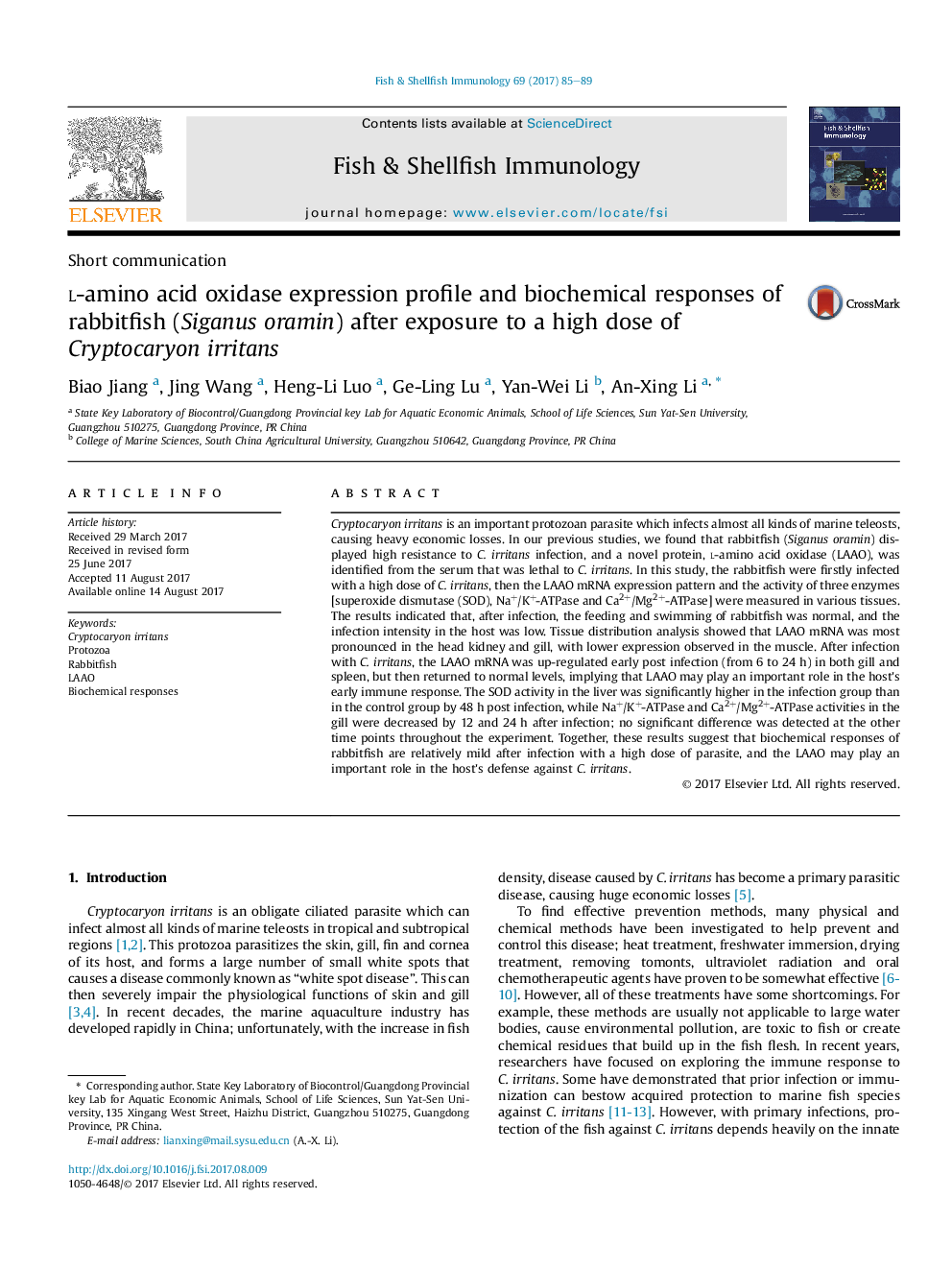| Article ID | Journal | Published Year | Pages | File Type |
|---|---|---|---|---|
| 5540696 | Fish & Shellfish Immunology | 2017 | 5 Pages |
Abstract
Cryptocaryon irritans is an important protozoan parasite which infects almost all kinds of marine teleosts, causing heavy economic losses. In our previous studies, we found that rabbitfish (Siganus oramin) displayed high resistance to C. irritans infection, and a novel protein, l-amino acid oxidase (LAAO), was identified from the serum that was lethal to C. irritans. In this study, the rabbitfish were firstly infected with a high dose of C. irritans, then the LAAO mRNA expression pattern and the activity of three enzymes [superoxide dismutase (SOD), Na+/K+-ATPase and Ca2+/Mg2+-ATPase] were measured in various tissues. The results indicated that, after infection, the feeding and swimming of rabbitfish was normal, and the infection intensity in the host was low. Tissue distribution analysis showed that LAAO mRNA was most pronounced in the head kidney and gill, with lower expression observed in the muscle. After infection with C. irritans, the LAAO mRNA was up-regulated early post infection (from 6 to 24 h) in both gill and spleen, but then returned to normal levels, implying that LAAO may play an important role in the host's early immune response. The SOD activity in the liver was significantly higher in the infection group than in the control group by 48 h post infection, while Na+/K+-ATPase and Ca2+/Mg2+-ATPase activities in the gill were decreased by 12 and 24 h after infection; no significant difference was detected at the other time points throughout the experiment. Together, these results suggest that biochemical responses of rabbitfish are relatively mild after infection with a high dose of parasite, and the LAAO may play an important role in the host's defense against C. irritans.
Related Topics
Life Sciences
Agricultural and Biological Sciences
Aquatic Science
Authors
Biao Jiang, Jing Wang, Heng-Li Luo, Ge-Ling Lu, Yan-Wei Li, An-Xing Li,
